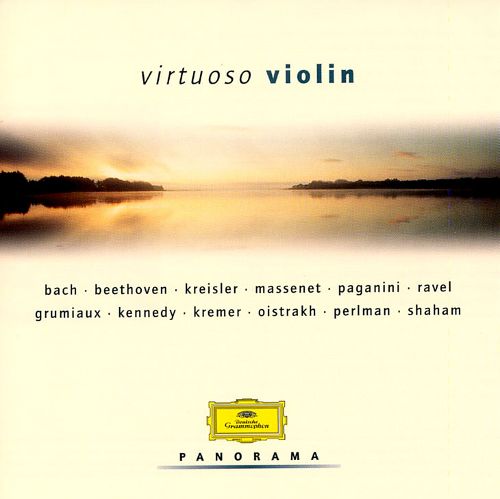Logowanie
Dlaczego wszystkjie inne nie brzmią tak jak te?
Chai Lang, Fan Tao, Broadcasting Chinese Orchestra
Illusive Butterfly
Butterly - motyl - to sekret i tajemnica muzyki chińskiej.
SpeakersCorner - OSTATNIE!!!!
RAVEL, DEBUSSY, Paul Paray, Detroit Symphony Orchestra
Prelude a l'Apres-midi d'un faune / Petite Suite / Valses nobles et sentimentales / Le Tombeau de Couperin
Samozapłon gwarantowany - Himalaje sztuki audiofilskiej
PROKOFIEV, Stanislaw Skrowaczewski, Minneapolis Symphony Orchestra
Romeo and Juliet
Stanisław Skrowaczewski,
✟ 22-02-2017
BARTOK, Antal Dorati, Philharmonia Hungarica
Dance Suite / Two Portraits / Two Excerpts From 'Mikrokosmos'
Samozapłon gwarantowany - Himalaje sztuki audiofilskiej
ENESCU, LISZT, Antal Dorati, The London Symphony Orchestra
Two Roumanian Rhapsodies / Hungarian Rhapsody Nos. 2 & 3
Samozapłon gwarantowany - Himalaje sztuki audiofilskiej
Winylowy niezbędnik
ClearAudio
Cartridge Alignment Gauge - uniwersalny przyrząd do ustawiania geometrii wkładki i ramienia
Jedyny na rynku, tak wszechstronny i właściwy do każdego typu gramofonu!
ClearAudio
Harmo-nicer - nie tylko mata gramofonowa
Najlepsze rozwiązania leżą tuż obok
IDEALNA MATA ANTYPOŚLIZGOWA I ANTYWIBRACYJNA.
Wzorcowe
Carmen Gomes
Celebrating the art and spirit of music - vol. 5 - Reference Songs
- CHCECIE TO WIERZCIE, CHCECIE - NIE WIERZCIE, ALE TO NIE JEST ZŁUDZENIE!!!
Petra Rosa, Eddie C.
Celebrating the art and spirit of music - vol. 3 - Pure
warm sophisticated voice...
SAMPLER - STS DIGITAL, Gregor Hamilton
Celebrating the art and spirit of music - vol. 2 - Love songs from Gregor Hamilton
...jak opanować serca bicie?...
SAMPLER - STS DIGITAL
Celebrating the art and spirit of music - vol. 1 - Leonardo Amuedo
Największy romans sopranu z głębokim basem... wiosennym
Lils Mackintosh
Celebrating the art and spirit of music - vol. 4 - A Tribute to Billie Holiday
Uczennica godna swej Mistrzyni
Nigel Kennedy, David Oistrakh, Arthur Grumiaux, Salvatore Accardo, Henryk Szeryng, Gidon Kremer, Gil Shaham
Virtuoso Violin
- Nigel Kennedy - violin
- David Oistrakh - violin
- Arthur Grumiaux - violin
- Salvatore Accardo - violin
- Henryk Szeryng - violin
- Gidon Kremer - violin
- Gil Shaham - violin
A brief but to-the-point introduction to the development of the violin and its music, plus a chronological line, give way to the more listener-friendly sequence listed above. The first disc is divided evenly between the violin at its most sweetly soothing and its scope for fiendish virtuosity, the second gives us four substantial, well-contrasted pieces. A progression from easy listening to real exploration and appreciation, and the listener who wishes to take that step and has a predilection for the violin may find this collection really helpful. Poor performances would have rendered the exercise vain, but here we have some of the finest violinists of the recent past and present. Perhaps Shaham and Oppitz try too hard with the Ravel Tzigane while achieving less than some who treat it more mellifluously, but for the rest these are some of the most distinguished recordings of these works in the catalogue. It is interesting that the contrast between the various styles of violin-playing which might have been expected is less noticeable than the overall consistency. All the artists are concerned with making the instrument sing without exaggerated vibrato or portamenti and adopt a straightforward non-interventionist approach to the music (yes, Kennedy included). It would be almost invidious to single out the separate items, but Oistrakh's very rich, full tone was an especial pleasure (the more so since so much of his art is preserved on sub-standard Russian recordings), and so were two quite exceptional collaborations; Kremer and Argerich in Beethoven and Perlman and Ashkenazy in Franck. Not so long ago I was remarking with regard to a Brendel set on Vox that one of the hallmarks of a great pianist is that every note has its importance. Listen to Argerich in the Beethoven slow movement. Her left hand may be playing something not much more elaborate than an Alberti bass, but each note has a wonderful luminosity, revealing this to be the foundation from which the melodic lines, both hers and the violinists, derive. And also with Ashkenazy I would like to draw attention to the slow movement, for it is not particularly surprising that he negotiates with ease all the semi-quaver passages in the second and fourth movements which many an enthusiastic academy student has splashed his way through. But listen, rather, to the sweet luminosity of his chording as the Recitativo-Fantasia opens, and to how, as the piano part flowers into triplets, the non-harmony notes are placed like pebbles gently dropped into a pool of water, each one leaving its mark behind it. And hear how this partnership gives real shape to a movement which can seem harder to bring off than the others, where so often sheer enthusiasm can carry the day. Presumably the seasoned collector will have or want these performances in their original context but this is an extremely well-planned anthology for the sector of the public at which it is aimed. Christopher Howell https://www.musicweb-international.com/classrev/2001/May01/virtuoso_violin.htm
























